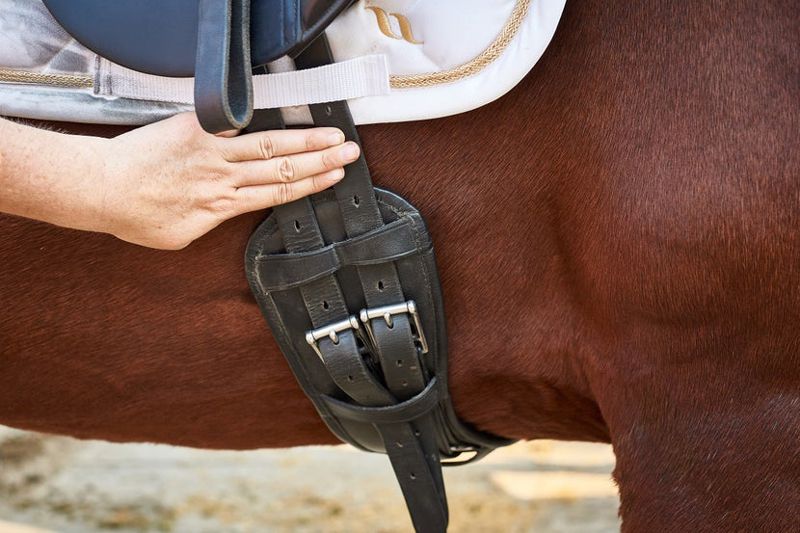The type of girth and how it fits is sometimes disregarded by many horse owners, but you should spend some time selecting the best girth for your horse to ensure that the horse is comfortable. If you’re overwhelmed by the options, we’re here to help you make the best decision. Here we will share some guideline for buying horse girths.
For a lot of years, the design of Horse Girths has been a hot topic. Rather than merely constructing a device to secure the saddle in place, more and more manufacturers are looking at how horses move and building girths that work with your horse. There are also several different materials to pick from. Leather is still a popular choice, but synthetic materials have a lot to offer as well, including ease of maintenance.
What Should The Girth Length Of Your Horses Be?
You will need a simple fabric measuring tape to take the measures; just keep in mind to take the measurements in inches and not in cm. it is similar to the way you measurements for your pants as horse dressage Horse Girths come in two-inch increments. Here are a few easy methods to get precise measurements.
- Place the measuring tape near the billet straps, located near the right-hand side of the saddles.
- With someone’s assistance hold the tape and record the measurements.
- Measure from the girth line (the widest part near the ribs) to the center billet holes on the left-hand side.
What Are the Best Horse Girths Material Options?
All materials are divided into two categories: synthetic (artificial) and natural. The horse girths should be flexible, sturdy, soft, and long-lasting, regardless of the material. Remember that the girths will always be damp from your horse’s sweat, so you can’t afford to use less expensive materials as you do not want your horse to suffer any kind of bacterial or fungal infection. We’ve listed some of the most critical aspects of each material.
- Cotton– Cotton is a very pocket-friendly material because it absorbs moisture and sweat rapidly. Cotton, on the other hand, will harden with time and lose its natural characteristics. Combine cotton with rayon if cotton is your only preference.
- Synthetic Rubber – This non-slip material is easy to clean. However, this material is unsuitable for some type of horse breeds. Hence before you opt this horse girth ensure it is best for the breed of your horse. The drawback of Synthetic rubber is that it does not hold well after repeated use and is prone to cracking over time.
- Angora Goat Hair – Also known as Mohair string, Angora goat hair is a sturdy, robust, and breathable fiber. On the other hand, Mohair string falls under the expensive category that is extremely difficult to clean and gets soiled rapidly.
- Sheepskin – Sheepskin is a budget-friendly material too and it is also one of the softest of all the material on the list. However, it is not a long-lasting material as it can stiffen and get more challenging with time.
- Nylon — Nylon is a washable and long-lasting material. This is a long-term investment. However, it is not good at absorbing sweat and moisture. Your horse won’t be able to wear it for long periods at a time.
Conclusion
Whether your Horse Girths is made of natural or synthetic material, it’s critical to maintain the girth for the well-being of your horse. It should always be clean as accumulation of dirt can rub against the skin of your horse causing rashes. If your girth is made of leather, you’ll need to use a conditioner to keep it supple after washing. A synthetic Horse Girths can look as good as leather with minimum efforts required to clean them with warm water and maintain its appearance.

Reblog It collaborates closely with clients to develop tailored guest posting strategies that align with their unique goals and target audiences. Their commitment to delivering high-quality, niche-specific content ensures that each guest post not only meets but exceeds the expectations of both clients and the hosting platforms. Connect with us on social media for the latest updates on guest posting trends, outreach strategies, and digital marketing tips. For any types of guest posting services, contact us on reblogit.webmail[at]gmail.com.
